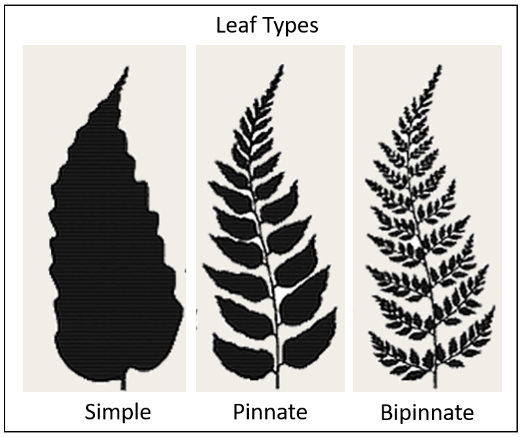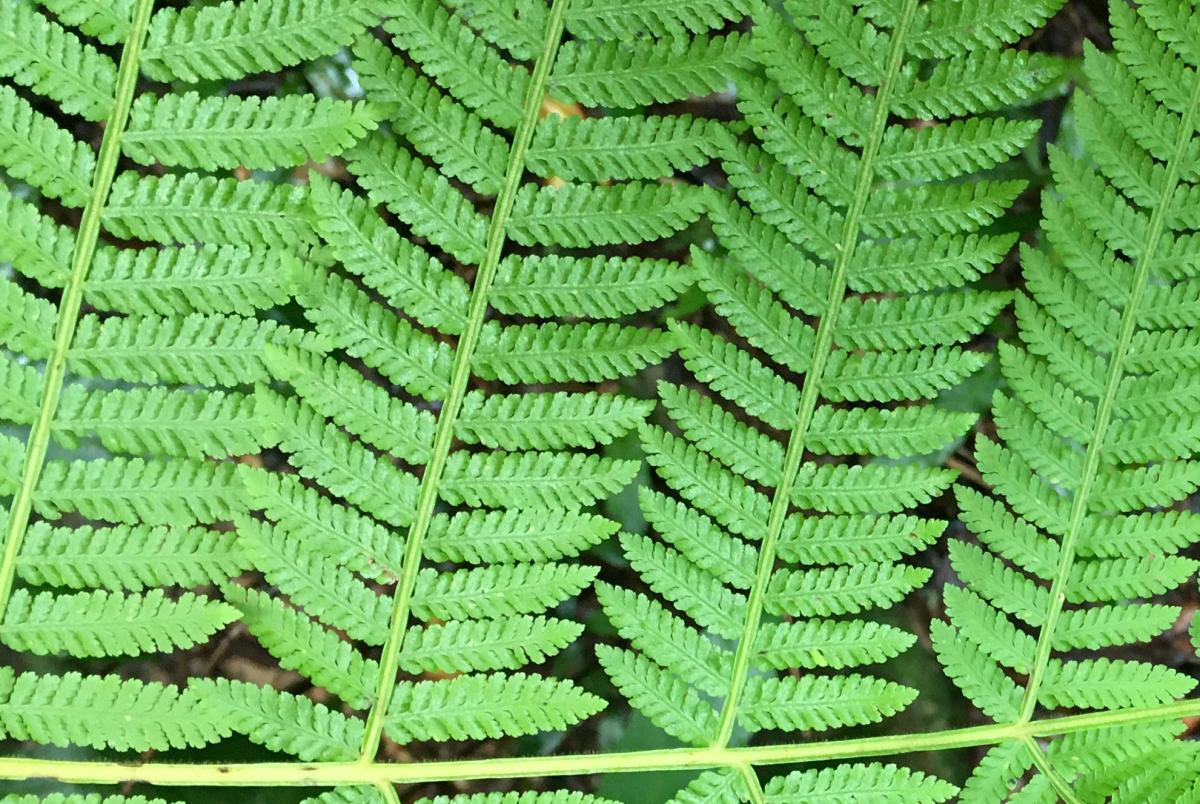By Jamie Oliver
Ferns are common plants found almost everywhere in the rainforest, from the forest floor, on logs, in tree canopies and on trunks, and growing as tall ‘tree ferns’. Ferns are a group of vascular plants that lack flowers and seeds. (The term ’vascular’ refers to specialised structures that conduct water, minerals, and nutrients around the plant.) The life cycle of a fern has two distinct stages – the larger plants that we are familiar with produce spores on their leaves, spores later germinate in damp areas into tiny plants that sexually reproduce – thereby completing the cycle to form new spore-producing plants. Some ferns can be tricky to identify and require inspection of the placement of spores on the fronds, but there are quite a few that have distinctive features, readily distinguishable by a careful novice observer.
1. Rebecca’s Tree Fern (Cyathea rebeccae)


Although many gardens around Paluma have tree ferns with robust trunks reaching up to 10 metres or more in height (Cyathea cooperi) the most common tree fern you will encounter along the shady walking tracks near the village is Rebecca’s Tree Fern. This species has a distinctive slender trunk and deep green glossy fronds that are ‘bipinnate’ (see leaf types below). Rebecca’s Tree Fern is also commonly found along the sides of smaller roads (eg. back of Lennox Cr.) where its ability to produce suckers around the main stem (an unusual feature in a tree fern) allows it to form small clumps. These young suckers can be mistaken for some other fern since the fronds don’t form secondary leaflets (they are pinnate rather than bipinnate). Uncommon in the Paluma rainforest but more widespread in the north, Cyathea robertsiana is the only other species of tree fern that has a slender trunk . It can be distinguished from Rebecca’s tree fern by its more delicate fronds, with leaflets that are deeply lobed.


2. Bird’s nest fern (Asplenium australasicum)


The bird’s nest fern is a well-known feature of the Wet Tropics and easy to recognise by its elongate simple fronds arising from a central area that often accumulates leaf litter and the occasional seedling of other plants. This fern is generally epiphytic (growing on other plants) and along the walking tracks is usually found on tree limbs high up in the forest, although in well-lit areas (and gardens) it can be found on logs or tree trunks near the forest floor. Asplenium australasicum is by far the most common bird’s nest fern around Paluma and can be identified (if it is low enough) by checking the mid-rib of one of the larger fronds. A. australasicum has a prominent triangular raised mid-rib on the lower surface of the frond, while the upper surface is much smoother. Another species (A. nidus) which is less likely to occur has a prominent rounded mid-rib on the upper surface of its fronds while the lower surface is smooth.
3. King Fern (Angiopteris evecta)


While it is not a tree fern with a defined trunk, this fern has the largest fronds in the world (up to 9m long) and its base can be 3m across. Such giant specimens are more common around the Daintree, but smaller specimens (fronds up to 1.5m) can be found reliably along the banks of most creeks around the village. It is most easily recognised by the large glossy pinnate fronds and by their bulbous base. There are examples of this fern on either side of the foot bridges halfway along the H-Track, and at the far end of the Rainforest Track.
4. Elkhorn Fern (Platycerium bifurcatum)


This is a common epiphytic fern around Paluma and can be found on trees from nearly ground level to the crown. It can grow to an enormous size and will occasionally overbalance a small tree and cause it to fall over. The primary erect fronds are flattened and divided into large fingers or lobes at the margin. The fronds are initially erect but then hang down to cover the base. The base is formed from flat guard leaves that turn brown. The elkhorn fern has multiple centres of frond growth, which distinguishes it from the staghorn fern (more likely found in open forests) which has only one centre.
5. Gristle Fern (Blechnum cartilagineum)


The gristle fern is a glossy leaved fern of the forest floor that has beautiful pink new fronds. The fern can be distinguished from most others along the Paluma tracks by the shape of the leaf and the fact that the lobes or leaflets of each frond extend onto the central axis and merge with the adjacent leaflet. Most other ferns of this shape and habit have distinct leaflets arising from the bare central stem.
One other fairly common species of fern has this form of merged central leaflets along the stem but it also has small leaf-like lobes extending down the base, whereas in C. cartilageneum the base of the stem is bare. The patterns of veins on the leaflets are also quite distinctive – they occur in pairs that arise from a single point on the central stem.

